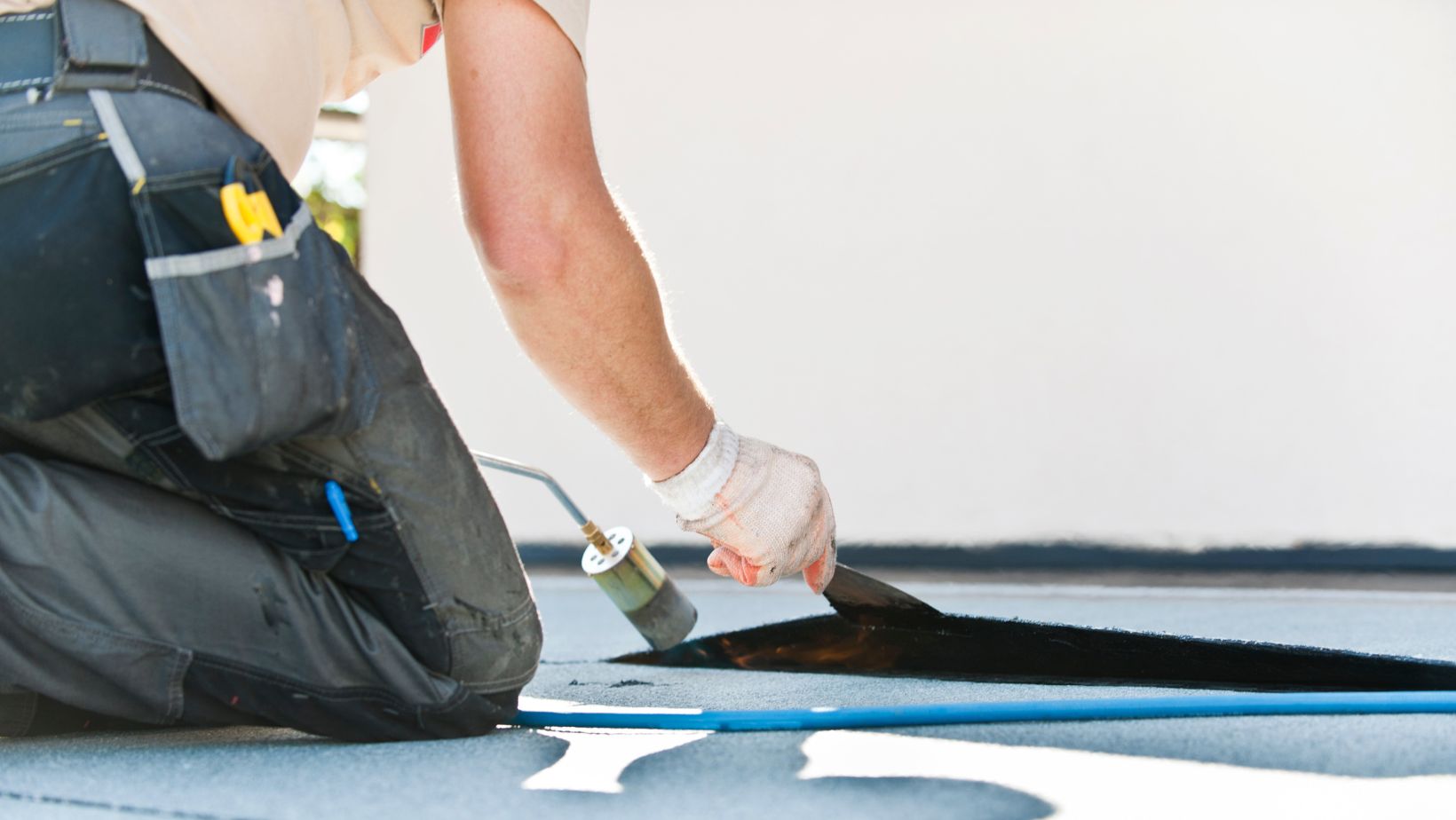When it comes to roofing solutions for commercial buildings, one option that has been steadily gaining popularity is Thermoplastic Olefin (TPO) roofing. In recent years, TPO roofing has become the go-to choice for many commercial building owners and facility managers, thanks to its numerous advantages and environmental benefits. In this blog post, we’ll delve into the world of TPO roofing, exploring its advantages, sustainability, and why it’s becoming a preferred choice for commercial roofing projects. Whether you’re a property owner, facility manager, or just curious about the roofing industry, this post will shed light on the TPO roofing phenomenon.
Advantages of TPO Roofing

TPO roofing has earned its place in the commercial roofing market due to several significant advantages it offers:
Energy efficiency and sustainability: TPO roofing membranes are highly reflective and have excellent UV resistance, which helps reduce the absorption of heat. This reflective quality makes TPO roofs “cool roofs,” leading to decreased indoor cooling requirements and energy savings. Additionally, TPO roofing is known for its recyclability, making it an environmentally responsible choice.
Durability and longevity: TPO roofing is designed to withstand the harshest weather conditions, including extreme heat, cold, and UV exposure. It is highly resistant to tears, punctures, and mold growth, ensuring a longer lifespan for your commercial roof.
Cost-effectiveness: TPO roofing is often more cost-effective than other commercial roofing options. Its ease of installation, coupled with its energy-saving benefits, leads to lower long-term operational costs. The reduced need for frequent repairs and maintenance further adds to its cost-effectiveness.
Ease of installation and maintenance: TPO roofing is lightweight and flexible, making it relatively easy to install. This ease of installation translates to reduced labor costs and shorter project timelines. Moreover, TPO roofing requires minimal maintenance, saving both time and money over its lifespan.
Environmental Benefits of TPO Roofing
TPO roofing is not only advantageous for building owners but also for the environment:
Reflective and cool roofing properties: TPO roofing reflects sunlight and heat away from the building, reducing the “heat island effect” in urban areas. This cooling effect helps mitigate urban heat and contributes to a more comfortable environment for building occupants.
Reduction in energy consumption: TPO roofs decrease indoor cooling needs, leading to lower energy consumption. This energy efficiency not only reduces utility bills but also reduces greenhouse gas emissions, making TPO roofing an eco-friendly choice.
Contribution to LEED certification: TPO roofing can contribute to achieving Leadership in Energy and Environmental Design (LEED) certification for your commercial building. Its energy-efficient and sustainable properties align with LEED criteria, earning points towards certification.

TPO Roofing vs. Other Commercial Roofing Options
To better understand the popularity of TPO roofing, it’s essential to compare it with other commercial roofing options:
Comparison with EPDM roofing: While EPDM (ethylene propylene diene monomer) roofing is another popular choice, TPO roofing offers superior energy efficiency and a longer lifespan. TPO is also weldable, making it less prone to leaks compared to EPDM’s seams.
Comparison with PVC roofing: TPO roofing shares some similarities with PVC (polyvinyl chloride) roofing but is considered a more environmentally friendly option due to its fewer chlorine content and lower carbon footprint.
Advantages over traditional built-up roofing: TPO roofing outshines traditional built-up roofing (BUR) in terms of energy efficiency, ease of installation, and cost-effectiveness. BUR systems can be heavy and require more extensive maintenance.
TPO Roofing Installation Process
Understanding the TPO roofing installation process is crucial for anyone considering this roofing option:
Substrate preparation: The existing roof must be cleaned, repaired, and properly prepared before TPO membrane installation.
TPO membrane application: The TPO roofing membrane is rolled out and mechanically fastened to the roof’s substrate. Heat welding or hot-air welding is used to seal seams, ensuring water-tightness.
Seam welding and bonding: Proper seam welding and bonding are critical to the success of a TPO roofing system. This step requires skilled professionals to ensure the integrity of the roof.
Quality control and inspection: After installation, a thorough inspection is conducted to check for any defects, irregularities, or areas that may need further attention. Quality control measures are essential to guarantee the roof’s performance.
TPO Roofing Maintenance and Repairs
Maintaining your TPO roof is relatively straightforward:
Routine inspections: Regular roof inspections help identify any issues early, preventing more extensive damage. These inspections should be conducted at least twice a year, ideally in the spring and fall.
Cleaning and debris removal: Keep the roof surface clean by removing leaves, debris, and any other foreign objects. This prevents clogs and allows water to drain properly.
Common TPO roofing issues and their solutions: Familiarize yourself with common TPO roofing issues, such as punctures, seams separating, or membrane shrinkage, and understand how they can be repaired to extend the roof’s lifespan.
The Role of Professional Roofing Contractors
Choosing the right roofing contractor is vital when considering TPO roofing:
Importance of choosing the right contractor: An experienced and certified roofing contractor is crucial for a successful TPO roofing project.
Qualifications and certifications to look for: Ensure that the roofing contractor holds certifications and qualifications relevant to TPO roofing, such as those provided by the manufacturer or industry associations.
Seek recommendations, read reviews, and conduct interviews to find a roofing specialist with a proven track record in TPO roofing installations and maintenance.
Future Trends and Innovations in TPO Roofing
Advancements in TPO materials and technology: Stay informed about the latest innovations in TPO roofing materials, including improvements in reflectivity, durability, and sustainability.
Emerging trends in commercial roofing sustainability: Explore emerging trends in sustainable commercial roofing practices, such as solar-ready TPO roofing systems and green roof integration.
In conclusion, TPO roofing’s growing popularity for commercial buildings is not without reason. Its advantages, including energy efficiency, durability, cost-effectiveness, and environmental benefits, make it an attractive choice for modern building owners and facility managers. By understanding the strengths of TPO roofing, comparing it with other options, and following proper installation, maintenance, and repair procedures, you can ensure a resilient and sustainable roofing solution for your commercial property.
When considering TPO roofing for your commercial building, it’s essential to partner with a reliable roofing contractor who understands the intricacies of TPO systems. Shield Roofing is a trusted name in the roofing industry, known for its expertise in TPO roofing installations and maintenance. Contact Shield Roofing today to explore TPO roofing options and discover how it can benefit your commercial building. With Shield Roofing, you’ll experience the advantages of TPO roofing backed by top-notch professionalism and service.
